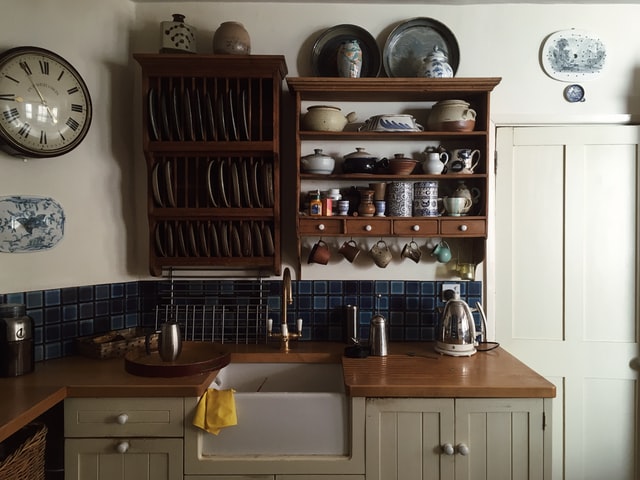If you are a condo owner, property manager you must understand the significance of cleaning the kitchen stacks. With all of the filth, grime, and even garbage that people put into their kitchen sinks, failure to properly maintain kitchen stacks may lead to expensive repairs in the future.
Cleaning the kitchen stacks involves an intense flushing process of the kitchen stacks. It is carried out by expert sewer professionals and is advised to be incorporated as part of an annual maintenance plan. In high-rises and condos, all residents share the same main sewer line. So condo owners can flush liquid waste into their kitchen drains. It is food waste, grease, and cleaning products that build up.
Inadequate maintenance of kitchen stoves can result in massive blockages and sewer backups that could be expensive to repair or clean.
Table of Contents
What do you mean by Kitchen Stack?
The kitchen stack is a sanitary/sewage pipe that gathers filthy water from sinks and dishwashers in the kitchen. The wastewater from the kitchen stack is sent to the building’s main drain. The water flows into the city’s sewage system. Grease buildup can sometimes cause major problems.
When greasy water is poured into the kitchen sink, the liquid grease cools and solidifies. After a few seconds, the grease solidifies and becomes extremely sticky, adhering to the sanitary pipe walls. The sticky substance causes a buildup, reducing the size of the hole in the pipe over time.
At some time, the pipe becomes so clogged with grease that water cannot drain. You might get a sewage backup at this point.
Getting Proactive About Your Kitchen Stack
If you’re looking to steer clear of hefty expenses and expenses, it’s time to look at your kitchen’s drains in a different manner. This implies a dual-pronged approach:
- Informing residents about the risks caused by oils, fats, and grease when they are being poured into the drains. It is worth investing in maintenance that is lower now because it will help you avoid costly repairs in the near future.
- Residents should be notified regularly with information on the steps they could take to lessen the chance of having to undergo rehabilitation for their drain stack. This includes putting all cooking oils and grease in trash containers instead of pouring grease liquid down the drain.
- For maintenance in terms of costs, regular cleaning of the kitchen stacks every year will help avoid the need for total rehabilitation in the future, which can save you thousands of dollars in re-piping.
- Property managers, unit owners, and board members could all benefit from knowing about the maintenance services offered by companies like CPL Tech.
Causes of Kitchen Stack Blockages
When oils, fats, and grease are poured into or flushed down drains, sinks, or even toilets, they go into the sewer system, where they cool, harden, and adhere to the inside of the sewer pipes. As additional fats, oils, and grease enter the system, blockages form and harden, eventually blocking the pipes altogether.
The most popular sources of oils, fats, and grease that come from foods are:
- Food items like meat and scraps (including baked products)
- Sauces, gravies, and salad dressings.
- Dairy products from dairy (milk, cream, yogurt, and cheese) (kefir, milk, yogurt,)
- Cosmetics, toiletries, and other items (makeup lotions, oils, and soaps)
How to Clean Kitchen Stacks
Although it’s impossible to manage every person in your apartment or condo complex, there are some options you can take to reduce the draining problems. Some of them are:
- Instructions to owners and tenants on how to properly dispose of their garbage. Avoid putting food and grease particles in the sink because they could accumulate over time.
- Make sure tenants wash their kitchen pipes frequently using vinegar and baking soda; this is a natural and safe cleaning agent.
- Keep a watchful eye on residents for signs of a backup in sewage. If someone notices that the kitchen sink in their home is overflowing or is clogging often, the management should be notified immediately for diagnosis and repairs.
- When drains are properly used, residents can be sure that the fees for condo associations won’t increase due to the high maintenance and repair costs.
Why Kitchen Stack Cleaning Is Important?
Kitchen stack cleaning entails flushing the kitchen stacks with high pressure. This is done by skilled sewer contractors and should be incorporated into an annual maintenance schedule. Because everyone in condos and high-rise flats shares the same main sewer line, when condosresident’s flush liquid waste down their kitchen drains, such as oil, food particles, and cleaning chemicals, that garbage accumulates.
Failure to maintain kitchen stacks properly may result in major sewer backups and obstructions, which can be costly to clear up or repair.
In Conclusion:
While many plumbers attempt to be a master of all trades, it’s essential that property managers determine which business is specialized in which services. In the past thirty years, “plumber” was the term used to describe “anything related to water. “Plumber” dealt with anything that was related to water within buildings, but these days, buildings are becoming more complicated for one firm to handle all issues.
There are many other elements that are essential to a successful kitchen stack cleaning task. Examples include the nozzles that are utilized, the tools being utilized, as well as the Gallons Per Minute (GPM) employed and numerous others.
